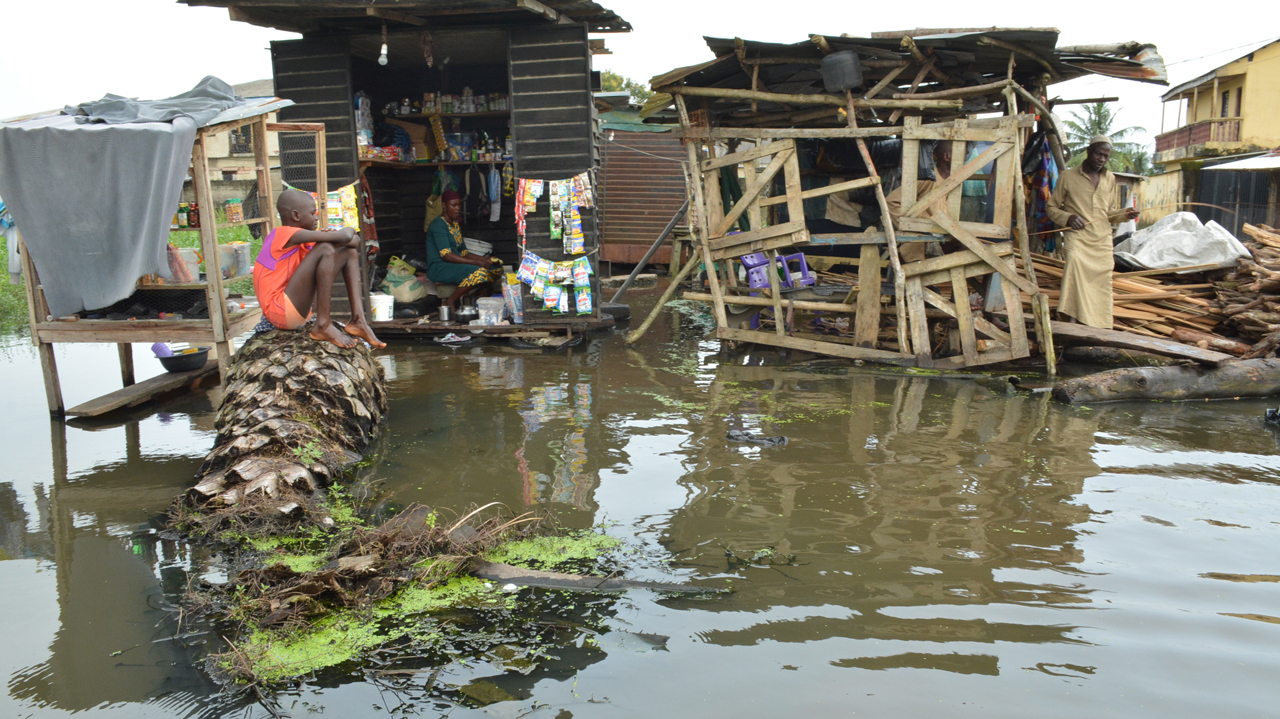The dividends accruing to Nigeria from its 853-kilometer coastline may be reversed as a new report warns that rising seas could affect three times more people and submerge some of the world’s coastal cities by 2050.
Research by Climate Central, a science organisation based in New Jersey, and published in the journal, Nature Communications, shows that 300 million people currently live in areas that become flooded at least once a year, and that half of these places would be below the high tide line by mid-century.
The scientists developed a more accurate way of calculating land elevation based on satellite readings, a standard way of estimating the effects of sea-level rise over large areas, and found that the previous statistics were far too optimistic.

At-risk areas include large portions of heavily populated cities like Mumbai, which is home to more than 18 million people and could be almost entirely underwater in the next 30 years. Models show that the worst effects could be seen across Asia where countries like India saw a sevenfold increase in the number of people set to be affected by annual floods, and China had a threefold increase.
According to the scientists, if cities must invest vastly greater sums in protective measures like seawalls and other barriers; they must do it quickly.
Efforts to get reactions from the Lagos State government were unsuccessful. A text message sent on Monday to Commissioner for Environment and Water Resources Tunji Bello was neither acknowledged nor replied to as at press time.
The research is coming on the heels of a landmark United Nations report that laid bare the severe risk to coastal cities and low-lying islands from climate change and the parlous state of the world’s oceans.
The report from the Intergovernmental Panel on Climate Change, a gold standard of scientific research, outlined the threat to hundreds of millions of people from the acceleration in the rate at which sea levels are rising, caused by a combination of melting ice in polar regions such as Greenland and Antarctica and the expansion of the oceans as the water warms.
The researchers warned that extreme floods, the likes of which have historically only occurred once per century, were likely to happen at least once per year by 2050 in many regions, especially the tropics, even if global warming is limited to 1.5C.
Globally, sea levels rose in the last century and various projections suggest substantial increases this century due to climate change. In Nigeria, there is no up-to-date sea level rise (SLR) assessments for the coast. Much of the Nigerian coast is low-lying with the consequence that a one to three meter rise in sea level, which may result from eustatic or climate change, will have a catastrophic effect on human activities in this region.
A study by the University of Plymouth found that a sea-level rise of three to nine feet would be disastrous. It examined the consequences of continued sea-level rise with a focus on erosion and inundation for the Nigerian coast and mulled the idea of coastal partnerships (CPs).
The Nigerian coast has been delineated according to distinct geomorphological units, which include the barrier, mud, delta and strand coasts. The Bruun model has been used to compute the shoreline recession along the Nigerian coast with the exception of the mud coast.
A Geographic Information System (GIS) was used to develop inundation models and examine the impact scenarios that SLR would have on critical elements, which include land, population, economic activity (Gross Domestic Product), urban extent, agriculture and wetlands with the aid of high quality spatially disaggregated global data.
A case study approach was used to assess the management practices of Pro-Natural International Nigeria; Niger Delta Wetland Centre, Niger Delta Development Commission; and Flood Erosion and Coastal Zone Management, Rivers State with the aid of a suite of systemic sustainability appraisal indices.
Results indicate that the shoreline recession would be mild along the coast while substantial loss due to the inundation of the critical elements is expected for all the scenarios considered. The sustainability assessment indicates that the CPs did not meet the required standard for sustainability, however, there was evidence of constructive management in some of them.
The study authored by Olusola Olalekan Popoola has been able to provide up-to-date baseline data concerning the vulnerability of the coast to SLR for the four coastal systems in Nigeria. The coastal sustainability assessment, which is the first-ever in Nigeria, reflects the need for corrective measures in the management practices of the CPs to achieve a sustainable coast in the light of coastal hazards.
It is a known fact that temperatures and sea levels are rising in Nigeria. Low-lying coastal cities are already experiencing devastating floods. Some cities are sinking due to increasing sea levels slowly encroaching on their coasts, while others are sinking because of excessive groundwater pumping.
For instance, Lagos, Nigeria’s commercial capital, and eight other coastal states, namely Akwa Ibom, Bayelsa, Cross River, Delta, Edo, Ogun, Ondo, and Rivers are at risk of being wiped out by flooding.
According to 100 Resilient Cities report, “Lagos is susceptible to damage from rising sea levels and coastal erosion, which have already led to a decline in water quality, the destruction of drainage infrastructure, and an increase in incidences of water and vector-borne disease.”
Environmental groups confirmed the development. The executive director of Sustainable Research and Action for Environmental Development (SRADev), Leslie Adogame, told The Guardian that Lagos is more threatened because of the way the city is being managed.
“In most coastal cities, the run-off from the hinterland is well managed, even if the city is below sea level. In Lagos, the run-off is not well managed. There is a conflict between the water from the sea and run-offs from the tributaries.

“If Lagos is going to experience an overflow, it will be so disastrous because the internal drainage system is in a poor state and some are clogged up with plastics and debris,” Adogame said. He urged the state to put in place climate change adaptation and mitigation measures to curtail the threat.
A former executive director, Nigerian Environmental Study Action Team (NEST), Prof. Emmanuel Nzegbule, said climate change is real in Nigeria and could have a disastrous effect on coastal states.
Read Also:Surveyors give reason for flooding in Abuja Trademore Estate
He cited the flooding, two years ago, in Victoria Island, which displaced residents in Lekki Phase II, Osapa London, Victoria Garden City, Ikoyi, Banana Island, Badore, Bugije, Igbo Efon, and Awoyaya. He warned that this could be a pointer to what awaits coastal dwellers.
Among the consequences of coastal flooding, he foresees a change in lifestyle among farmers whose lands would be inundated, health hazards from water-borne diseases, and pollution of underground and fresh water. Sea level rise would aggravate existing threats to the continued survival of the biodiversity of low-lying coastal areas. Physical and biological parameters of several of these habitats would change substantially as a result of submersion and increased salinity.
Also, the Nigerian Conservation Foundation (NCF) notes that Lagos and other coastal cities globally that are less than one meter above sea level could be submerged by 2050. “Any city less than one meter above sea level is under threat and Lagos is part of the many others,” Dr. Muhtari Aminu-Kanu, director-general of NCF said.
“Sea level rise is a looming danger that could threaten the existence of Lagos if we do not treat it with seriousness. This is not a problem for Lagos alone to carry; it is a national problem that should involve the Federal Government,” he added.
The Executive Director, Centre for Investment, Sustainable Development, Management and Environment (CISME), Lekan Fadina, stressed that government must ensure the river basin authorities are people-friendly and developers should desist from building houses on flood-prone areas.





